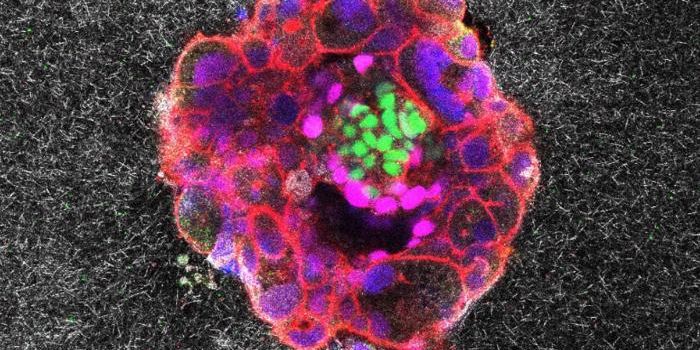Flanged male orangutans experience more severe early life stress
Linear enamel hypoplasia, or LEH, occurs when tooth enamel fails to develop correctly during growth. When the enamel stops growing, it leaves behind a band of reduced enamel on the tooth’s surface. This can occur for a variety of reasons, though the most common reason is due to childhood stress, where a stressful event causes a disruption in normal growth patterns.
Recently, Labroots covered research which suggested that, in mandrills, LEH correlated with their mother’s resumption of sexual cycles and other aspects of their mother’s social lives. Now, another new study used LEH to gauge stress markers in primates, though this time in orangutans.
Alexandra Kralick, from the University of Pennsylvania, and Kate McGrath, from the George Washington University and Ohio State University, sought to determine whether flanged male orangutans had more severe stress markers than unflanged male orangutans.
Left: Flanged male orangutan, Right: Unflanged male orangutan
When it comes to orangutan physiology, there are two types of males: flanged and unflanged. All orangutan males look similarly in childhood but due to an increase in testosterone during sexual maturation, some males develop secondary sexual characteristics such as large cheek pads and a laryngeal throat pouch, giving them the name “flanged.” Other males do not have such a drastic increase in testosterone and thus do not develop such pronounced secondary sexual characteristics, earning them the name “unflanged.” Flanged male orangutans tend to be much larger, and are generally preferred by females. While the development leading to the presence or absence of flanges is known, the specific trigger that leads to this difference is relatively unknown.
Thus, research aimed at determining physiological differences between flanged and unflanged males could eventually aid in determining what triggers the flanges.
When compared to unflanged males, flanged males tend to have higher levels of the stress hormone cortisol throughout their development. Since LEH reflects the severity of early life stressors, Kralick and McGrath sought to test whether unflanged males have less severe LEH than flanged males due to differences in how the two experience stress. They hypothesized that, should there be differences between the manifestation of LEH due to an arrested development in unflanged males, this could be either an adaptation to avoid elevated stress levels or simply having experienced lower stress levels during the early childhood.
Their results suggested that flanged males have significantly deeper LEH than unflanged males, indicating that flanged males experience more stress during development than unflanged males. In turn, this means that the arrested development seen in unflanged males is likely an adaptation to avoid physiological impacts that are associated with stress. These results provide important evidence into determine how, and why, there is such a vast difference in adult male orangutan forms.
Sources: Labroots, American Journal of Physical Anthropology, BBC









